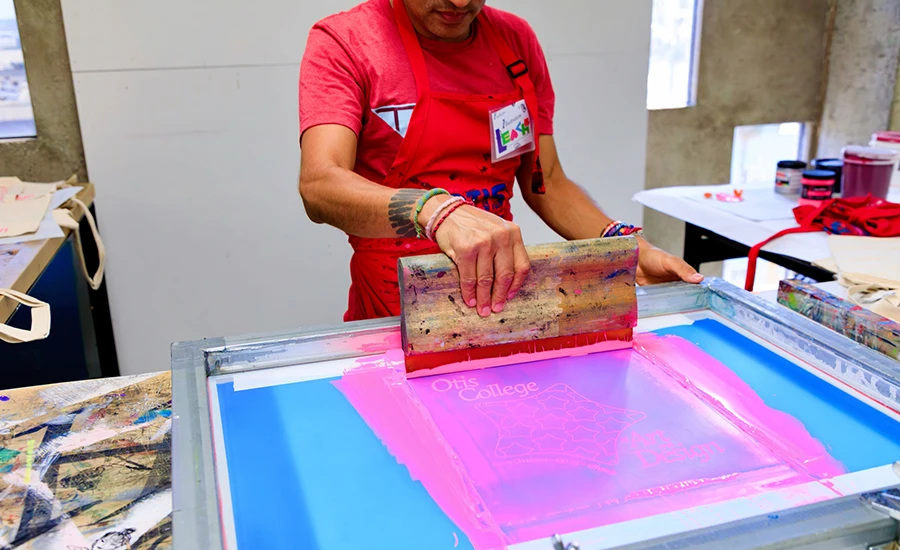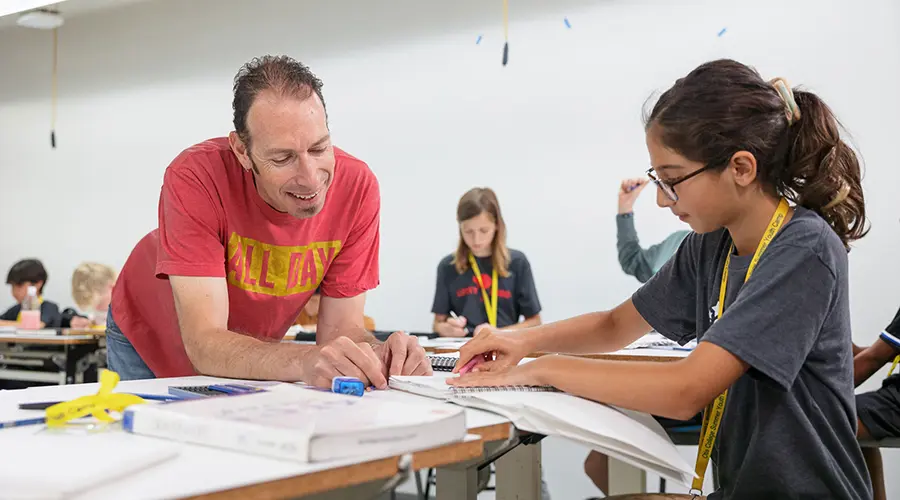Otis College Game Design Students Create Video Games through Enterprising Program
The next generation of gaming comes to life through a unique collaboration with USC.
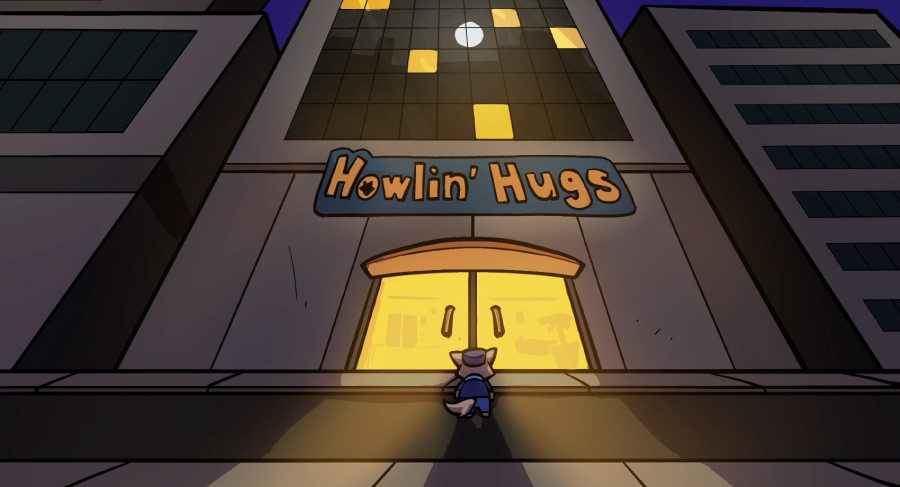
Kyle works as a janitor at Howlin’ Hugs and receives a stressful email one evening. All employees must now work the night shift, or risk not getting paid.
This would be an inconvenience for anyone not used to the graveyard shift, but it’s especially bad for Kyle: he happens to be a werewolf.
The WereCleaner—a 2024 Apple App Store Editor’s Choice and finalist for iPhone Game of the Year—is one of several video games published through a collaboration between Otis College of Art and Design’s Game and Entertainment Design program and the University of Southern California’s USC Games program. The two institutions have been collaborating for more than 10 years, resulting in two courses: The Advanced Games Creative, (also known as AGC), and Advanced Games Projects, (also known as AGP).
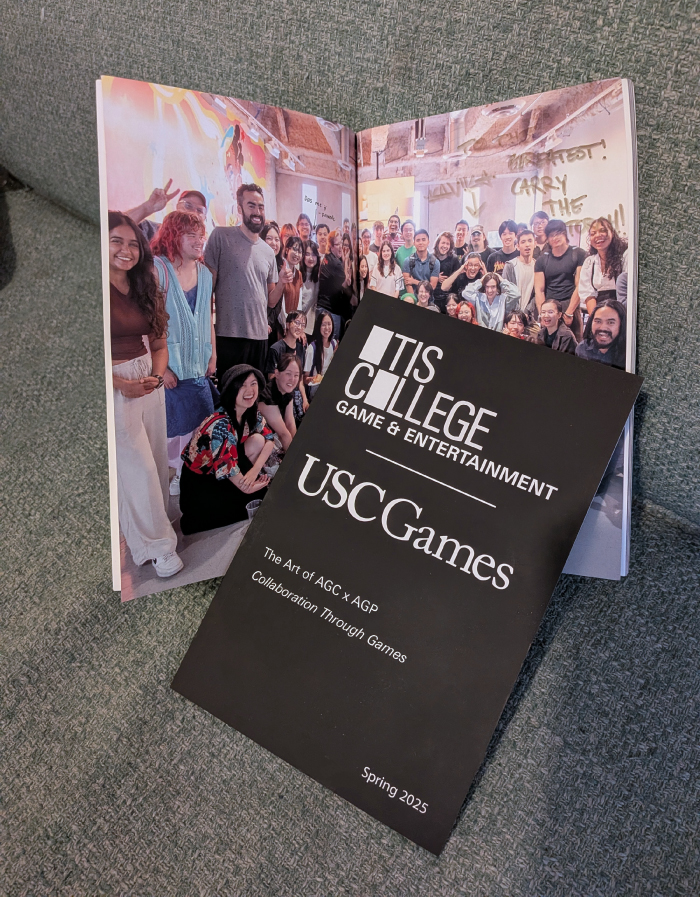 As part of the collaboration, students pitch their games and then work on them throughout
the Summer and Spring semesters. Some of their work premieres at the USC Games Expo,
the most recent of which took place in May 2025 and featured more than 60 games.
As part of the collaboration, students pitch their games and then work on them throughout
the Summer and Spring semesters. Some of their work premieres at the USC Games Expo,
the most recent of which took place in May 2025 and featured more than 60 games.
Players can then check out the published games for their Mac, PC, or Steamdeck devices on Steam, a popular gaming platform.
Students also have had their work showcased in print through the publication “The Art of AGC x AGP: Collaboration Through Games Spring 2025.” Inspired by similar concept art books from other campuses, as well as publications
from game studios, “The Art of AGC x AGP” shines a spotlight on this student work.
First Players
The AGC/AGP program began with Harry Mott, former chair of Otis’s then-named Digital Media department, who collaborated with professors at USC. It has evolved over the years: Otis instructor Gary Geraths began collaborating with Scott John Easley, a senior lecturer in computer science and applied computing at USC. After Geraths retired, Jayashis “Jay” Bhaumik began managing the Otis side.
In addition to Easley, Bhaumik also credits Duane Loose—an instructor in USC’s School of Cinematic Arts, Interactive Media, and Games Division—as a crucial collaborator.
Bhaumik says he works closely with Easley to refine the program every semester; they also visit each other’s campuses often.
The goal is to prepare students for careers after graduation. “The program is designed for students to experience mistakes and learn how to troubleshoot things” in a manner similar to real-world industry experience, says Bhaumik. Beyond just sharpening their technical abilities, he hopes that students can also develop crucial communication and organizational skills.
“This collaboration is the closest analog to an indie startup experience,” Bhaumik says. “Suddenly students are interacting with someone their age and skill level that they don’t know, and with a skillset they might have limited knowledge of—all working towards a long-term goal.”
Expanding in the Game Universe
Approximately 30 Otis and USC students take the ACG elective each semester. Due to its popularity, recent graduates and current students often return as volunteers.
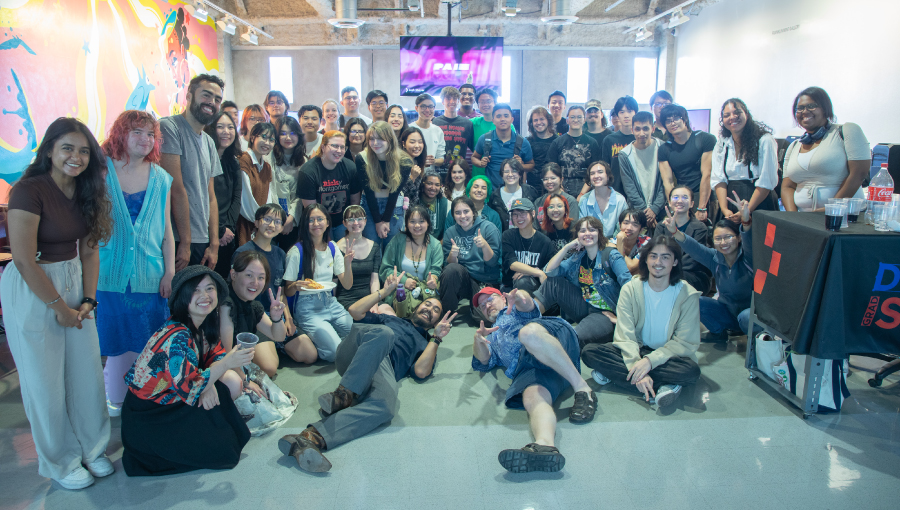
Katie Letourneau (’27 Game and Entertainment Design, Concept Art) first participated in the AGC class in 2024 in her Foundation year at Otis. She designed profile photos for two non-player characters (NPCs) in Egregore, a first-person adventure game steeped in mystery with a setting inspired by modern-day Egypt. Students from Berklee College of Music also collaborated on Egregore.
Letourneau says she learned a lot from the older students in her course and later worked on the multiplayer party game Potion Problems as a UI/UX artist, expanding her skill sets both as a creative and as a team member.
“I have to interact not only with artists, but with programmers and writers as well,” Letourneau says. “This has forced me to expand my social skills as well as my ability to change and receive conflicting inputs. While challenging at times, I’m grateful to have the opportunity to work with so many diversely talented people.”
Letourneau is currently working on two game projects and has become “increasingly passionate about game design in terms of creating narratives and assigning game mechanics to make them feasible,” she says.
Moxie Yama (’26 Game and Entertainment Design, Creative Writing) took the ACG elective in the Spring 2025 semester at Otis. An avid sci-fi and horror fiction writer, they recently became interested in UI/UX design. After joining the team that worked on Unchained: The Tale of Enra, a tactical role-player game (RPG) in which a botanist goes in search of a legendary artifact, Yama gained more confidence in their work.
Beyond learning new skills, Yama says they have learned a lot about the “context in which you’re making this art in the first place.”
“The project didn’t feel like a class,” Yama says. “There was so much genuine excitement and dedication in every team to bring these games to life. I’ve never felt my work more appreciated than in that experience. Plus, the art I did is a pretty major highlight of my portfolio, and my time with Unchained has helped me connect with other teams outside the collaboration and find a role as a UI/UX lead artist in a team I’m in now.”
More information about the Game and Entertainment Design program at Otis College.
Related News
